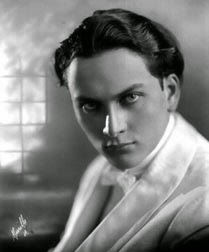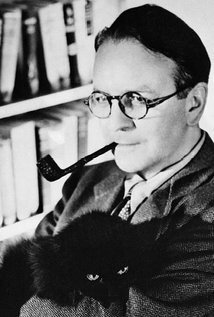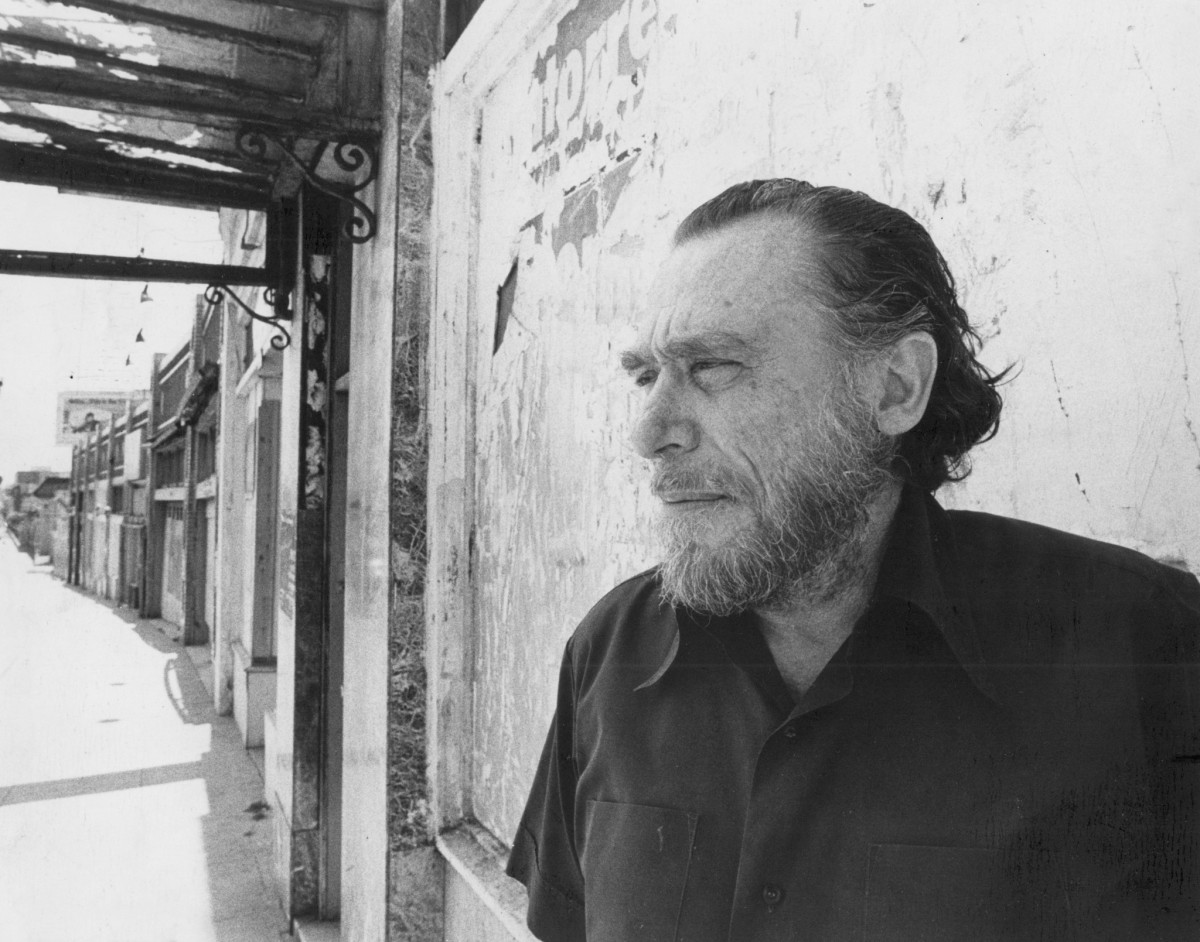What’s the link between Raymond Chandler, poet laureate of noir detective fiction, and Charles Bukowski, patron saint of low-life drunks? Two that I can think of: a dead gay psychic and a book.
That book was Bukowski’s Pulp. Published in 1994, it was the last he ever wrote. The bard of the bottle was on his way out when he wrote this skewed take on the LA detective thriller and few regard it as his best. But Bukowski’s homage to the works of Chandler and fellow noir master Dashiell Hammett is never less than interesting, even as he subverts their tropes and goes looking for more philosophical mean streets to stroll down. By the book’s end the text has escaped its noir roots to meanders off into autobiography and a creeping sense of mortality.
The dead gay psychic is something else.
Pulp Friction
His name was Manly P Hall and he was worth $52 million. Hall came from modest origins in Canada, moved to California in 1919 at the age of eighteen, and found he had a natural talent for the new age beliefs popular at the time. The state was so notorious for its offbeat spirituality in the interwar years that Dashiell Hammett would make a cult called the Temple of the Holy Grail a major plot point in his San Francisco-based novel The Dain Curse.
After briefly mixing with a Theosophy-style movement pushing a new Rosicrucian ‘Aquarian Age’, he started giving talks of his own about reincarnation in a small rented room above a bank. Tall, long-haired, and intense-eyed, he caught the attention of a local neo-Transcendentalist congregation called The Church of the People. Soon he was the church’s minister.
People liked the charismatic young speaker who mixed Christianity with sociology, philosophy, and ancient religions. Some saw him as a guru. Carolyn Lloyd and her daughter Estelle, wealthy with oil money, funded him on a trip around the world to examine the spiritual practices of Eastern nations. Hall began writing books like The Initiates of the Flame and The Lost Keys of Freemasonry.
In 1928 he synthesised his mix of Theology, occultism, Christianity, classical philosophy, and eastern religions into The Secret Teachings of All Ages – An Encyclopedia Outline of Masonic, Hermetic, Qabbalistic and Rosicrucian Symbolic Philosophy. It was a heavyweight, privately-published volume that was either a divinely inspired work that opened the portals of wisdom or semi-literate mystical trash, depending on your view.
The Root of All Evil
Hall founded the non-profit Philosophical Research Society, Inc and built up a library thousands of books strong. Carolyn Lloyd and Estelle continued to fund him; Caroline left him a house in Los Angeles in her will and a share of her oil wealth when she died in 1946. Estelle was equally generous in her will.
 There were two marriages, both unconsummated, either because Hall had his mind on higher things or else preferred the company of strong young men. Most people leaned towards the latter view. The first wife committed suicide; the second hung around.
There were two marriages, both unconsummated, either because Hall had his mind on higher things or else preferred the company of strong young men. Most people leaned towards the latter view. The first wife committed suicide; the second hung around.
Later Hall had some brief involvement in Hollywood, writing a film treatment about astrology (made as When Were You Born? with Anna May Wong), joined the Freemasons, claimed psychic powers, and wrote more books. He got impressively fat and became an off-beat California celebrity, officiating Bela Lugosi’s wedding in 1955 and inspiring Elvis Presley to lecture his studio band about The Secret Teachings of All Ages.
By the mid 1980s, Hall was rich, old, and sick. A former banker and computer salesman called Daniel Henry Fritz manoeuvred his way into the household through a shared interest in aspects of the occult and managed to snag a full-time nursing position. He looked after Hall with some unconventional techniques that included frequent colonics, urine-based healing rituals, and regular masturbation of the wheelchair-bound mystic. Fritz and his son took over the Philosophical Research Society, Inc. Employees suspected them of siphoning off funds for their own use.
Hall’s wife Marie had initially welcomed Fritz’s help but turned against him when money started going missing. The Californian guru spent the last years of his life confused and incoherent, being fought over by Marie and Fritz in a battle for control of his chequebook.
Suspicious Circumstances
Manly Palmer Hall died on 29 August 1990. Marie was away and Fritz preferred to chant Manley’s soul to the other side rather than call an ambulance. He managed to make three calls to a doctor claiming Hall was dead, then dying, then dead again. The doctor arrived to find Hall deceased in bed, domestic help scrubbing a stain off the carpet, and ants streaming in and out of the corpse’s ears and nose, typical signs the body had been outdoors for a length of time.
It emerged that Hall had recently changed his will to benefit Fritz and son. There was a vicious legal battle with Marie. She won and the LA police took an interest in murder charges but the evidence wasn’t strong enough. Fritz and his son were forced out of the Philosophical Research Society, Inc and ended up in Nevada. Fritz died there in 2001, claiming to the end that Manly Hall had been a great man and a great friend.
So far, so California. The Bukowski connection happened in 1985 when the hard-drinking author married Linda Lee Beighle, his long time girlfriend, at the The Church of the People. Beighle was a mystical hippy-type who ran a health food shop and had spiritual beliefs. Bukowski was an alcoholic poet and novelist finally clawing his way into the public consciousness after years of skid row poverty.
Hall maintained links to the Church and still performed his regular ministerial duties. He agreed to oversee the wedding but turned up late to the ceremony, leaving the couple and their guests sweating nervously. When he did arrive, tottering and hugely overweight, he looked so unwell that one guest thought he might not make it through the evening.
The Order of Melchizedek
Hall survived the ceremony, marrying Bukowski and Beighle ‘under the authority of the Order of Melchizedek‘. The couple stayed together until the writer’s death of leukemia in 1994 shortly after finishing Pulp. Their wedding reception was a drunken bit of debauchery which Hall avoided, although he did accept a kiss from the bride after she finished kissing her new husband.
‘May I kiss the minister?‘ she asked.
‘Oh my dear,’ said Hall, ‘the minister always gets a free kiss.’
Later the same year, Hall met Daniel Henry Fritz and presumably started getting his free kisses elsewhere.
 To find the Raymond Chandler connection we have to go further back. In 1912 a 24-year-old Chandler was on board a liner heading for America. He’d grown up in Chicago then moved to London with his Irish mother to escape her drunken, violent husband. Chandler had got a decent education at Dulwich College, joined the civil service, tried his hand at freelance journalism, and then gave up on it all. He went back to America.
To find the Raymond Chandler connection we have to go further back. In 1912 a 24-year-old Chandler was on board a liner heading for America. He’d grown up in Chicago then moved to London with his Irish mother to escape her drunken, violent husband. Chandler had got a decent education at Dulwich College, joined the civil service, tried his hand at freelance journalism, and then gave up on it all. He went back to America.
On the liner, he became friends with Carolyn Lloyd and her daughter Estelle. The Lloyds recommended Los Angeles and invited him to stay at their family home while Chandler established himself. In those pre-Manly Hall days, Carolyn Lloyd was more interested in art than mysticism. Her home was a salon for writers and painters, respectable but with a hint of bohemia. Estelle kept a Paris apartment and knew a young expat writer over there called Ernest Hemingway.
Chandler took the Lloyds up on their offer after spending some time in New York. They helped support him while he went through various low-grade jobs. Then came 1917 and America’s entry into the First World War.
Endings and Beginnings
Chandler fought on the Western Front for the last year of the war. He came back to Los Angeles and the Lloyds, injured and changed. He soon moved out to live with his mother, then complicated everything by falling in love with the mother of an army friend. The situation raised a lot of eyebrows and would have modern psychologists grinning like Cheshire cats at an easy diagnosis. He eventually married Pearl Eugenie ‘Cissy’ Pascal when his own mother died in 1924
By that time Chandler had been working in the oil industry for two years. Carolyn Lloyd’s husband had got him a book keeping job. Chandler worked his way up to vice-president of the Dabney Oil Syndicate but got sacked in 1932 for alcoholism, instability, and sleeping his way through the secretaries. Unemployed and drinking heavily, Chandler decided to try writing again. He became a successful pulp writer for Black Mask magazine then parlayed that into a career as the best-known detective novelist in America, pioneering a style both hard-boiled and romantic, tough and witty.
Chandler and the Lloyds seem to have drifted apart, a gap widened by his unconventional marriage, Estelle’s disappointed crush, and the sudden 1923 death of Carolyn’s husband. The Lloyds moved into spiritualism and Manly P Hall, perhaps seeking solace for their loss.
Literary Connections
Bukowski never wrote about Manly Hall. Chandler also left the page blank but if you squint enough you might see some trace of Hall in the character of fraudulent psychic Jules Amthor from Farewell, My Lovely. Amthor preys on rich women using staged crystal ball readings and has connections with high up cops. He ultimately proves to be a dead end in the investigation, but his aggressive response to being questioned allows Chandler to peel the lid off California corruption for a chapter or two.
Chandler may have been throwing some shade at Maley Hall and the way he efficiently extracted large sums of money from the Lloyds. Alternately, California had more than enough fake gurus to provide inspiration elsewhere.
So, there’s the Chandler-Bukowski-Dead Psychic connection. Famed noir writer Chandler was taken in by the wealthy Lloyd family in Los Angeles. They gave him a home and a job. Then the head of the family died, leaving Carolyn and Estelle in search of spiritual answers. They found them in the form of Manly P Hall and funded his occultist lifestyle until their own deaths. Decades later, a fragile Hall would oversee the wedding of skid row Shakespeare and alcoholic Charles Bukowski to his spiritually-inclined bride. Finally, Hall would die in suspicious circumstances straight out of a Chandler novel, only a few years before Bukowski’s final novel paid homage to Chandler and the genre he created.
It’s a small, mystical, hard-drinking world out there.
If you want to show some love for this blog then feel free to buy my books in paperback, hardback, or ebook:
The Men from Miami: American Rebels on Both Sides of Fidel Castro’s Cuban Revolution [or amazon.com]
![]() The King of Nazi Paris: Henri Lafont and the Gangsters of the French Gestapo [or amazon.com]
The King of Nazi Paris: Henri Lafont and the Gangsters of the French Gestapo [or amazon.com]
![]() Soldiers of a Different God: How the Counter-Jihad Created Mayhem, Murder, and the Trump Presidency [or amazon.com]
Soldiers of a Different God: How the Counter-Jihad Created Mayhem, Murder, and the Trump Presidency [or amazon.com]
![]() Lost Lions of Judah: Haile Selassie’s Mongrel Foreign Legion 1935-41 [or amazon.com]
Lost Lions of Judah: Haile Selassie’s Mongrel Foreign Legion 1935-41 [or amazon.com]
![]() Katanga 1960-63: Mercenaries, Spies and the African Nation that Waged War on the World [or amazon.com]
Katanga 1960-63: Mercenaries, Spies and the African Nation that Waged War on the World [or amazon.com]
![]() Franco’s International Brigades: Adventurers, Fascists, and Christian Crusaders in the Spanish Civil War [or amazon.com]
Franco’s International Brigades: Adventurers, Fascists, and Christian Crusaders in the Spanish Civil War [or amazon.com]

2 replies on “Raymond Chandler, Charles Bukowski, and the Dead Psychic”
In Chandler’s the Big Sleep the character Arthur Geiger is depicted as a homosexual dealer in rare and antique books who also dabbles in blackmail. Geiger’s antiquarian book shop acts as a front for an illicit pornography lending library. Geiger ends up getting murdered and a makeshift saltire, a flag with deep masonic connections, is later found covering Geiger’s dead body. Though not a mason till the 1950s Manly P. Hall wrote much about masonic rites and themes.
As well as his 1938 film treatment for When Were You Born? Manly P. Hall tried his hand at writing detective fiction based on occult themes, the zodiac and astrology such as his risible 1926 novel The Flower of the house of Ming. Perhaps it was this story that prompted Father Ronald Knox and H. Harrington to include in their 1928 Ten Commandments of Detective fiction the dictum that “No Chinaman must figure in the story”.
I don’t know if there was much rivalry for the patronage of the Lloyds between Chandler and Hall but I suspect that Chandler took him head-on with the writing of the Big Sleep. The structure of Chandler’s The Big Sleep with its 32 Chapters alludes loosely to the 32 Paths of Wisdom and their Tarot Counterparts, allusions that the Hall and the Lloyd’s circle would have picked up upon. The unconventional plot twists in the novel start to make a bit more sense when viewed from this angle.
LikeLike
Thanks for your comment. Some interesting ideas, although I suspect The Big Sleep’s unconventional plot twists owe more to it having been stitched together out of Chandler’s previously published pulp shorts than to any esoteric ideas based on the Tarot. Chandler, notoriously, had no interest in overall narrative structure, seeing plot as just an excuse for intricate smaller scenes. But who knows? Perhaps inside Philip Marlowe was an Aleister Crowley wildly signalling to be let out.
LikeLike